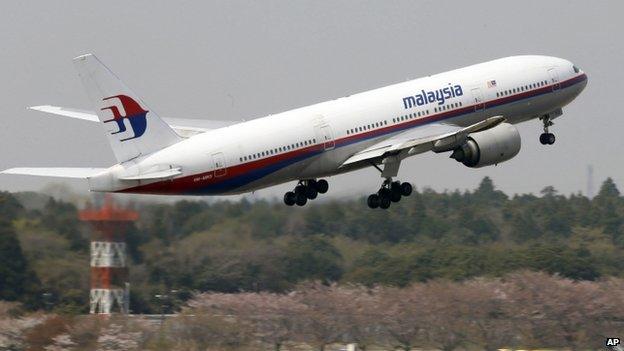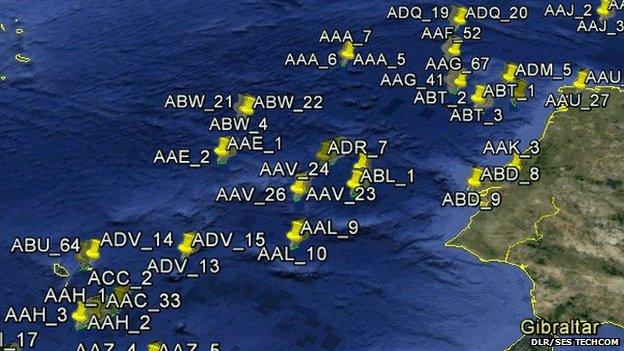Malaysia missing plane: Automated signals offer more clues
- Published

A Malaysia Airlines Boeing 777-200ER taking off from Narita Airport near Tokyo, Japan, last year
The story of Malaysia Airlines flight MH370 is a mystery for sure, but information is now starting to emerge that allows us to join some of the dots.
We know the aeroplane was fitted with a satellite system that enabled it to pass information to the ground during its journey.
This system, called "Classic Aero" and operated by London's big satellite telecommunications company Inmarsat, can transmit a range of data, even voice calls.
In its official statement, all Inmarsat will say is that it did indeed receive signals over its network from the plane, and that these were automated "pings".
All this has been shared with the Malaysian authorities.
What my sources tell me is that flight MH370 continued to ping for at least five hours after the aircraft left Malaysian airspace.
There is simply no way such a signal can be sent unless a plane is intact and powered.

The search, including here in the Malacca Strait, has been widened
Automated pings are essentially just an "I'm live" message.
Nonetheless, their receipt alone should make it possible to work out not just an approximate position for the aircraft at the time of transmission, but also an altitude.
All this may explain why the Americans have now suggested the search should be extended to the Indian Ocean.
None of this explains, of course, what happened to the aircraft, and, if confirmed, why it deviated so far from its planned route.
Priority
In this day and age, it seems remarkable that we do not know precisely where every plane in the sky is at any given moment. After the tragic loss of Air France flight 447 in 2009, equipping planes with everywhere-tracking equipment was supposed to be a priority.
The technology exists in a range of forms. Systems like that operated by Inmarsat could be used; and the European and German space agencies are even testing a sensor in orbit that can track signals from ADS-B, external (Automatic Dependent Surveillance-Broadcast) transmissions.
ADS-B is a situational awareness system that alerts planes to the proximity of other planes, but with the right equipment placed on a constellation of spacecraft in orbit, it would be possible to track these signals in even the remotest locations, such as over the poles.
Space companies are already doing something similar with ships on the open ocean.
All aircraft entering European airspace will have to be equipped with ADS-B by 2015.
One of the issues is always cost, which will have to be borne most likely by the airlines. But the distress of the families with missing loved ones on flight MH370 tells us these technologies have to be put in place, and soon.

Space ADS-B: The signals give flight information such as speed, position and altitude